O Sweet Canada, Canada, Canada: White-throated Sparrow: Northern Naturalist #19
White-throated Sparrows, Learning Your Sparrows, Part II, Review of How to Read Nature, by Tristan Gooley
One early spring, as I walked along the Superior Hiking Trail in dim sunlight, I began to hear a vigorous rustling in the distance. The noise was growing, and I found it a little disconcerting. As the noise built, I proceeded to scare myself: “What can it be?” As if I were standing in Lake Superior in a wind storm, I was engulfed in that loud sound of rustling, dry leaves, which turned out to be a flock of hundreds of White-throated Sparrows (Zonotrichia albicollis), shuffling through the dead leaves from the prior year as they foraged in the mostly leafless, bugless forest of that time.
The flock approached from behind a hillock and eventually I was in the middle of it. I have never seen such a large flock of this species since, but I will see or hear hundreds over the coming summer. The rustling scraping action is typical for them; usually though, it’s one bird along a trail, and not a legion.
White-throats are big, brown sparrows with dark bills, gray breasts and white throats—that white stands out in almost any light. Like many sparrows they have stripes on their heads of white or tan. The yellow in front of the eye is also notable.
White-throats are generalists, but they like forest edges, which makes them even more conspicuous along trails and roads. Their kicking, foraging movements are typical year-round. In the winter, they eat mostly seeds; they mix in more bugs during the breeding season, and they shift toward fruits after frost during fall migration.
When I was the naturalist at Jay Cooke State Park, every June morning when I was leading a hike, some camper would say, “There’s this bird . . “ and I would reply, “White-throated Sparrow,” to which they would say, “I haven’t told you yet.” But I knew, because White-throats nest in numbers there, and at that time of year, they often sing all night long. It’s one of my favorites, but I will admit that trying to sleep through it could be tough. Sometimes the melody falls, and sometimes it rises, but the intervals are the same. The mnemonic I learned for this song is “O Sweet, Canada, Canada, Canada,” but some books erroneously say it’s “Old Sam Peabody, Peabody, Peabody.” Once you’ve heard it a few times, you won’t need a mnemonic at all. To me, it says, “home,” as it’s one of the most distinctive and pervasive songs of the boreal forest.
Though they are common here, finding their nests is not usual, and you can see why in this great photo from Sparky Stensaas. The eggs are beautiful, sometimes with tinges of lavender.
Part of the population of White-throated Sparrows will have tan stripes on the head instead of white. What’s unusual about this is that it doesn’t signify age or sex; it’s a different plumage. Tan-striped birds are less aggressive and more retiring than white-striped; birds tend to mate with individuals of the opposite stripe color.
This species is one of the three I recommend you learn first as you approach learning sparrow identification. Once you do, you’ll see them everywhere in summer, and you can get to know them well enough that you can ask about other sparrows, “Why isn’t it a white-throat?”
Learn These Sparrows Next: the Early and Late Migrants
In my first article about sparrow identification, I recommended learning White-throated Sparrow, Song Sparrow, and Chipping Sparrow first. Next, I recommend learning our early-and-late migrants. These birds are among the first songbirds to head north in the spring and the last to head south in the fall. In between, we don’t see them much, because they mostly (one exception, see below) nest north of the border in Canada.
An advantage of learning these birds is that when they are around, there aren’t many other sparrows present, so as you begin, you can focus on these species without “the clutter.” You will, however, have to work at it a little—they may come through in a rush. Some years they have all stopped at my feeders; other years, I have had to go in search of them.
The first species, Dark-eyed Junco (Junco Hyemalis) is the exception alluded to above. They do nest here, but in small numbers. Most birders will experience juncos as migrants. You may be surprised that they are sparrows—their plumage is so distinctive that they are probably the easiest to identify. As they fly away from you, their bright, white tail feathers will flash in a scissor-like action. They have begun to arrive here this week. If you learn their hard, loud chip note and their trilly song, you’ll find them easily.
White-crowned Sparrows (Zonotrichia leucophrys) are another fairly-easy identification. They are big sparrows with mostly-clear, gray breasts, a light-colored bill (sometimes bright), and a distinctive crown of black-and-white stripes. Sometimes the crown is so bright that it looks “pasted on” to me. Almost every year, I hear one singing its gorgeous breeding song, even though we are far from the nesting grounds.
Harris’s Sparrows often arrive in flocks with white-crowneds and others. Adults are often immediately distinctive with their pink bills highlighted amidst the big, black patch on the head and breast. Younger birds, however, may have a much less extensive patch and require a little more thought to identify. They will always have some black in that area, and all plumages have that small dark patch behind the eye.
American Tree Sparrow (Spizelloides arborea) is often the first spring sparrow to appear here. It has a beautiful, bi-colored bill, and a gray head with rusty cap and stripes. Sometimes it has a dark spot in the middle of its clear, gray breast. Chipping Sparrows have a darker, rusty cap in spring and summer, so that might cause momentary confusion.
Across the continent, Fox Sparrows are a dizzyingly diverse group (18 sub-species, usually divided into three or four groups). Most of the Fox Sparrows we see here, however, are. “Red” Fox Sparrows as in the autumn photo above. At first glimpse, they will appear blotchy and deep rusty-red. The tail, especially, will stand out as red.
You’re not likely to confuse a Fox Sparrow with other sparrow species, but you will want to be sure you have ruled out Hermit Thrush (Catharus guttatus), another early migrant with a rusty-red tail. Notice the marked difference in the shape of the bill, and the lack of rusty color on the upper body of the thrush.
Enjoy these species over the next month while they are around, and then bid them farewell until they return in October.
Review of How to Read Nature: Awaken Your Senses to the Outdoors You’ve Never Noticed, By Tristan Gooley, The Experiment, 2017.
The title of this book is catnip to me. This is what I want to do: “read nature”; that is, know what I’m sensing and why, especially if what I learn takes me a step further, as in navigation or bird-finding.
Though they have different titles, this is the basic theme of all Gooley’s books, which include The Lost Art of Reading Nature’s Signs, How to Read a Tree, How to Read Water, and The Secret World of Weather, among others.
I chose to review this book because of the title, but this one is atypical in a way. Rather than writing about features of the landscape, here Gooley focuses on the observer’s experience in the wild. The book includes brief, experiential exercises to help you engage with what you see. The title is followed by a sub-sub-title: “Taste Direction, Smell Time, Hear the Weather, and More.”
I love this quotation from early in the book: “The joy of reading the signs of nature, and how one observation offers a clue or hint about some other aspect of the outdoors, is that it allows each of us to see each living thing, object, or idea within its own intricate network. It allows us to view things in the most practical and philosophical way simultaneously. There is no other field that I am aware does this.” (p. 2) This approach informs all of Gooley’s books, and it pinpoints one of the things I think is important about nature study.
His website, naturalnavigator.com includes a blog with many articles on navigational topics, as well as access to a course on natural navigation. If you’re in the U.K., his calendar if filled with hikes and talks, and he once led a television programme on navigating in the wild. He also offers a newsletter, each issue of which includes a navigational quiz. Usually the quiz is a photo of some place in the landscape, and the reader is asked to determine the direction based on clues in the image.
The trees and other plants are, believe it or not, in the United Kingdom, so you may not be familiar with the species he mentions, but, in most cases, this isn’t a problem. The books are discursive, not reference books. I enjoy this, but if you just want to find one specific thing, it might be a small challenge.
I enjoy reading Gooley’s books, and I recommend them to you.
News and Notes
Spring is coming fast now. Swans and geese are moving. I hear that on the plains of western Minnesota and the Dakotas, they are migrating in their millions, as is appropriate this time of year.
There is little to report on my St. Louis County big year, owing mostly to my time being devoted to other work at the moment. It’s also still slow here. It’s exciting to see migration picking up, and the robins have returned in numbers—I listen to them each morning as I wait for the bus.
I have heard this time of year referred to as “Fool’s Spring,” because the days are lengthening and occasionally we’ll have a warm, sunny day; but we’re still in for some slushy, snowy days too. I advise that you go head and be a fool—let spring bloom in your heart and in your step, whatever the objective conditions around you. Thanks for reading!




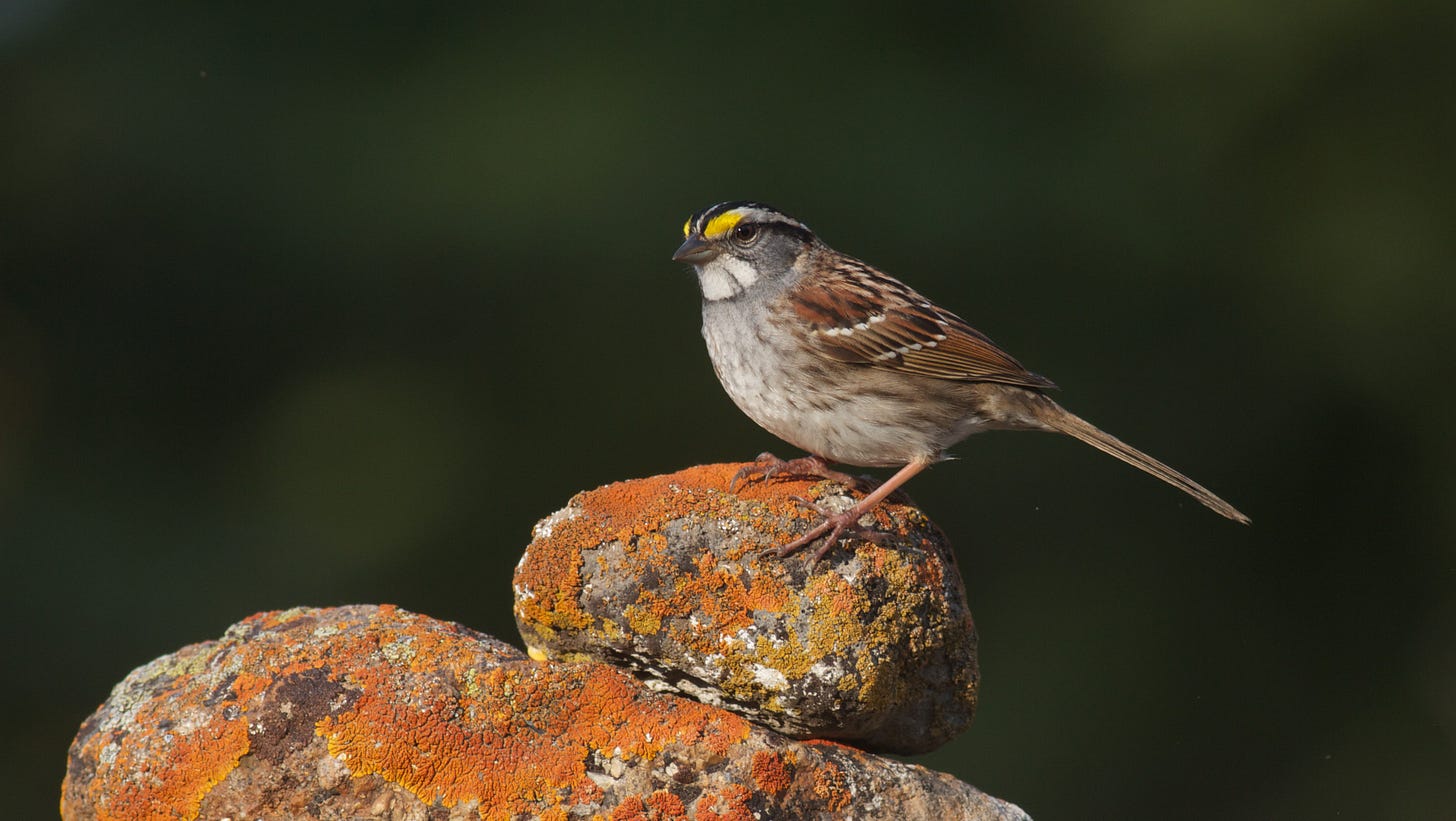

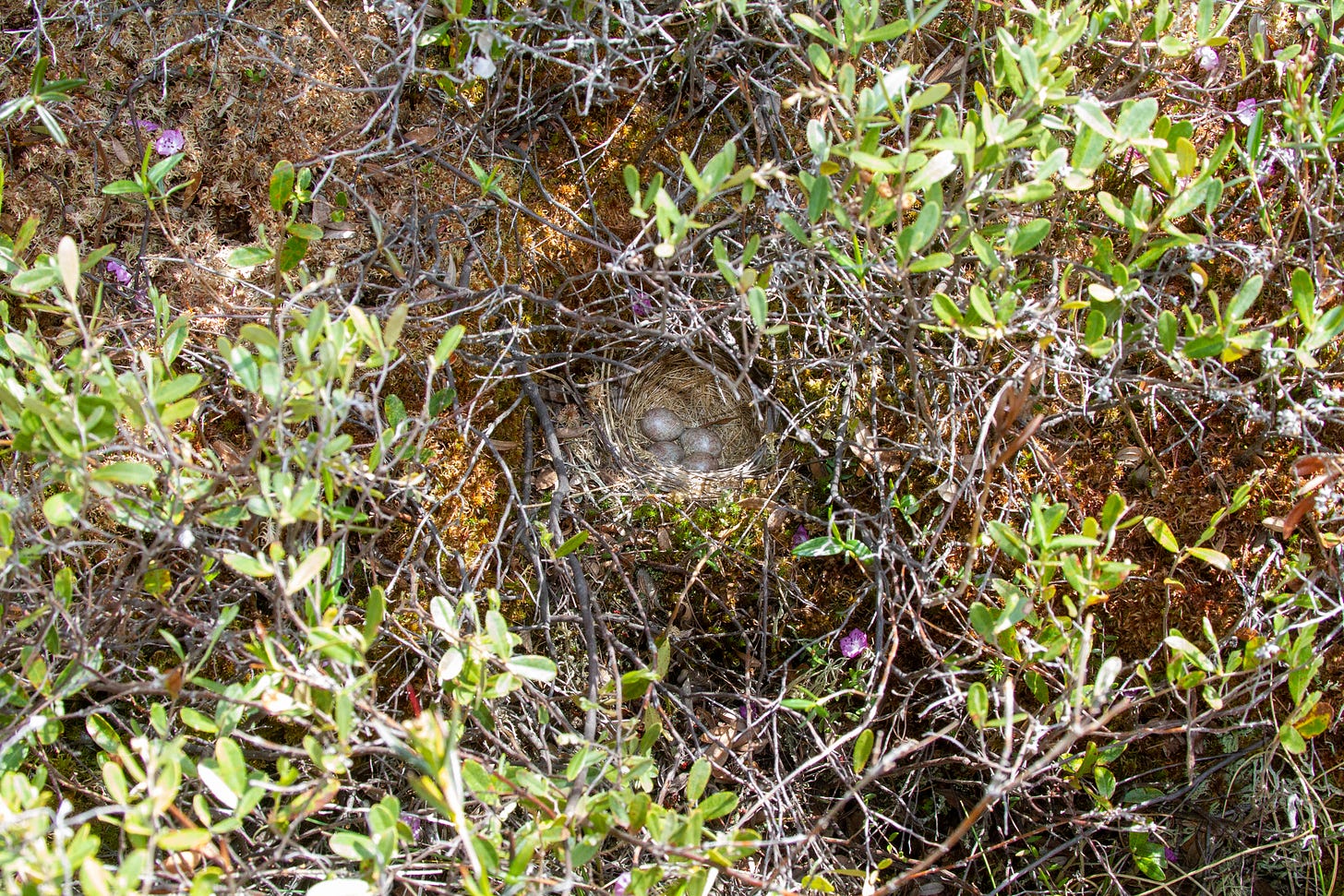
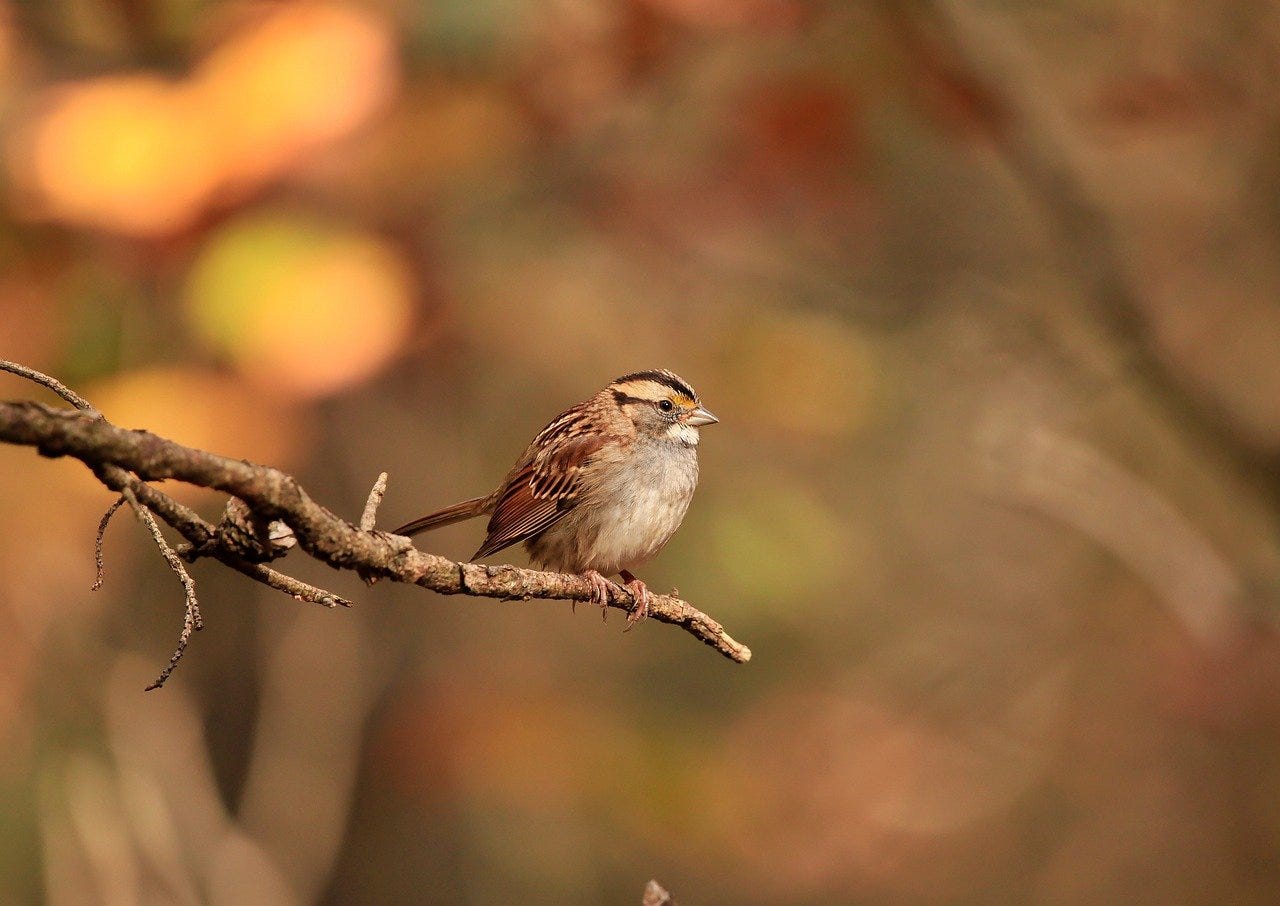

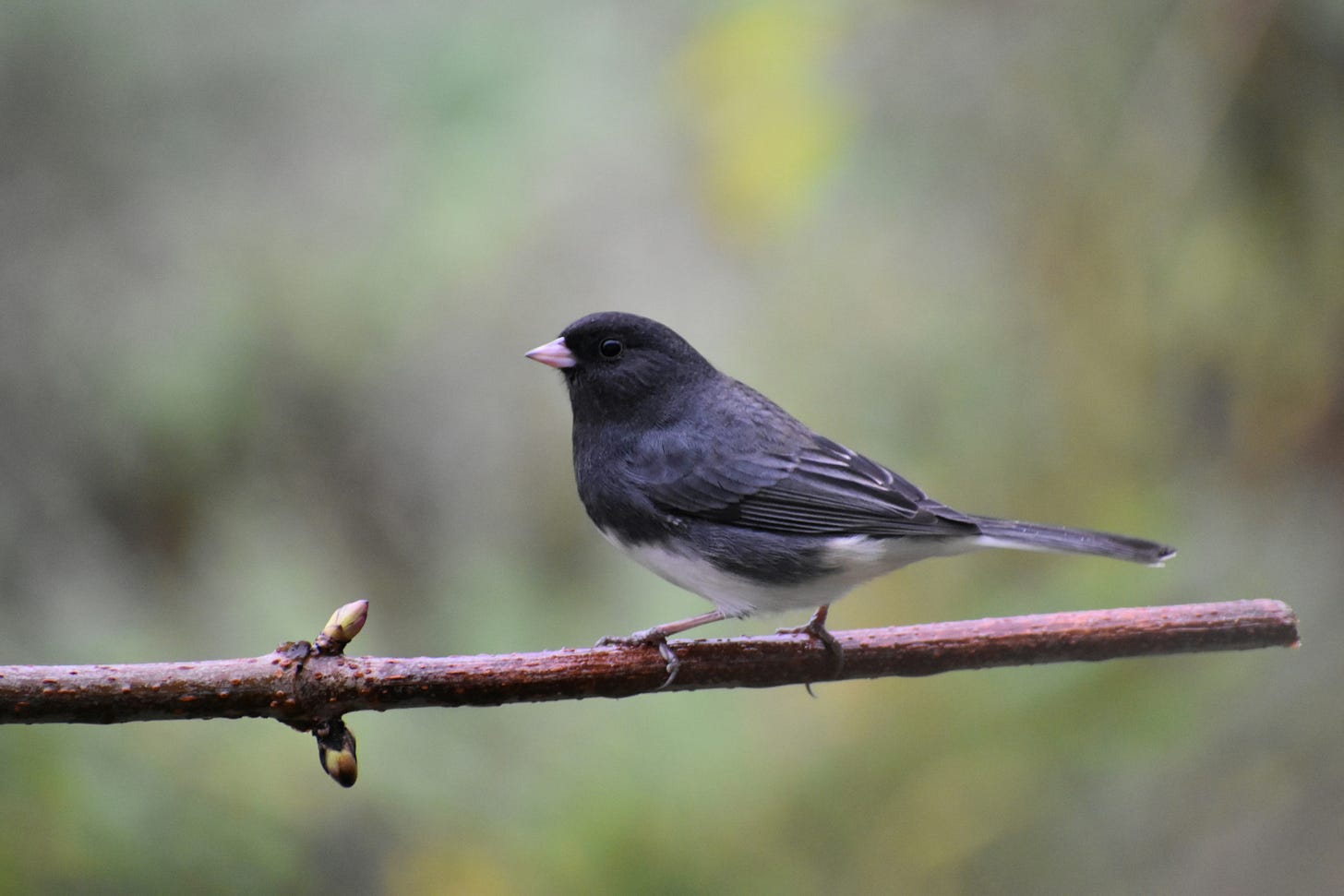


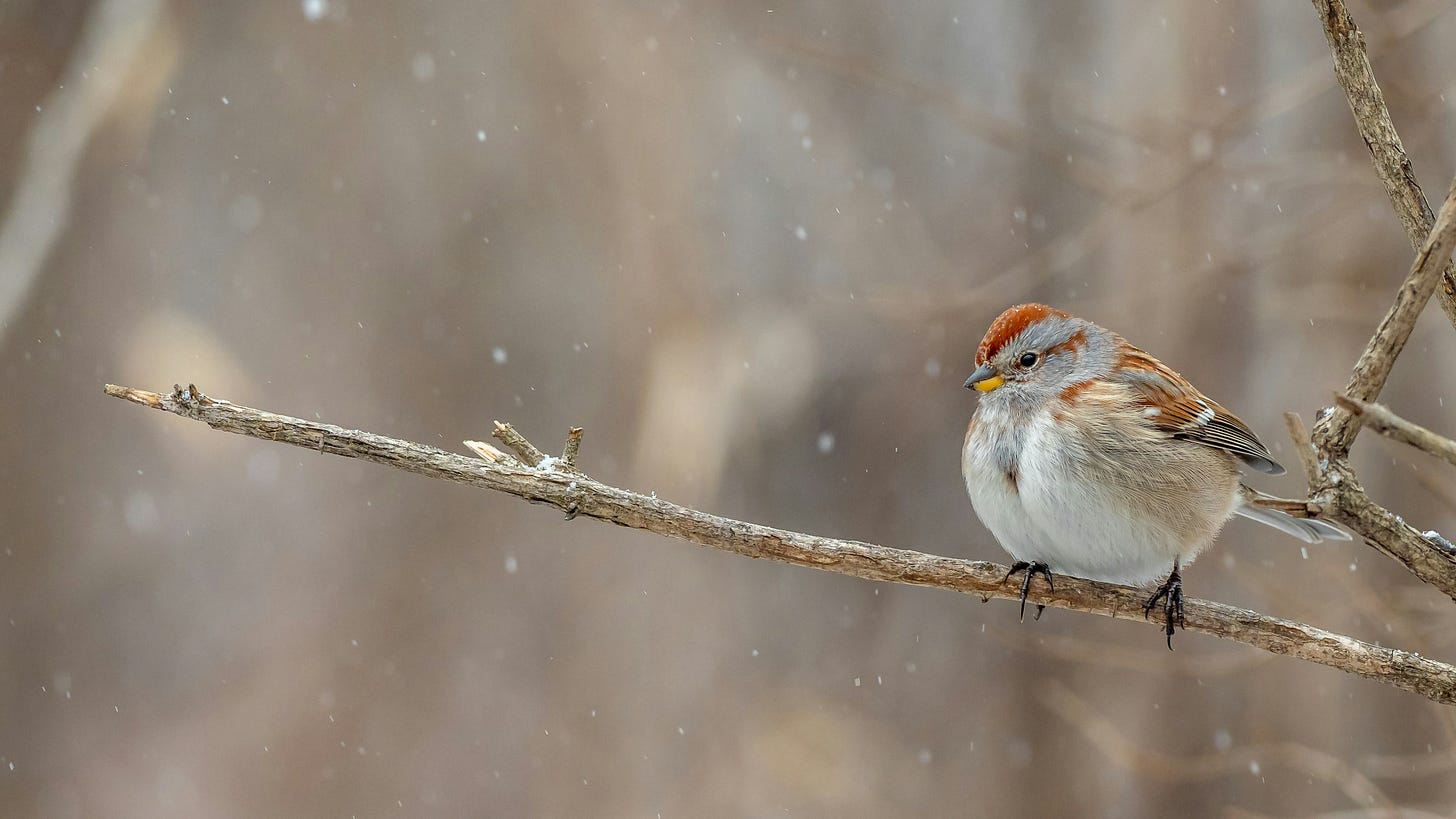
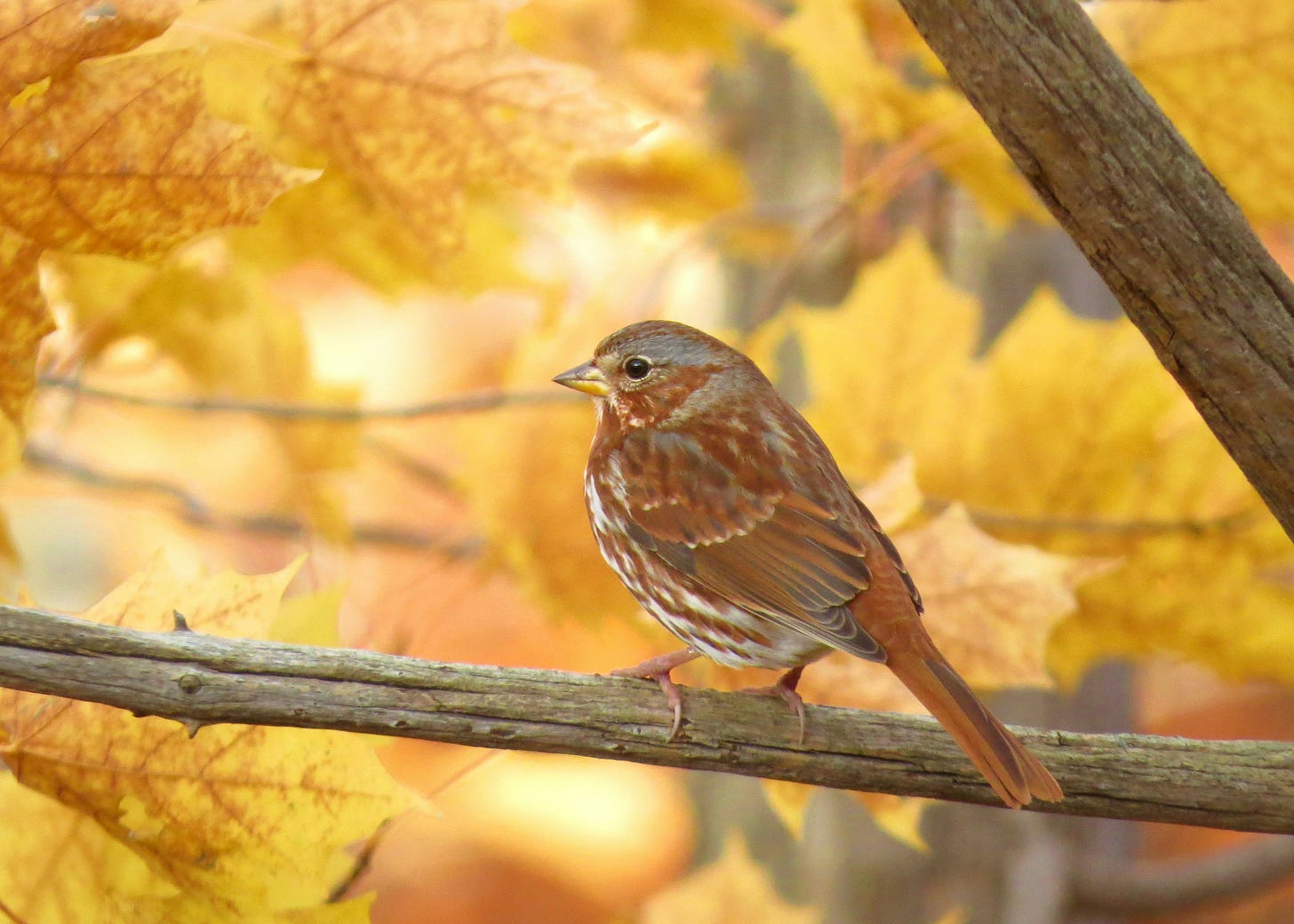

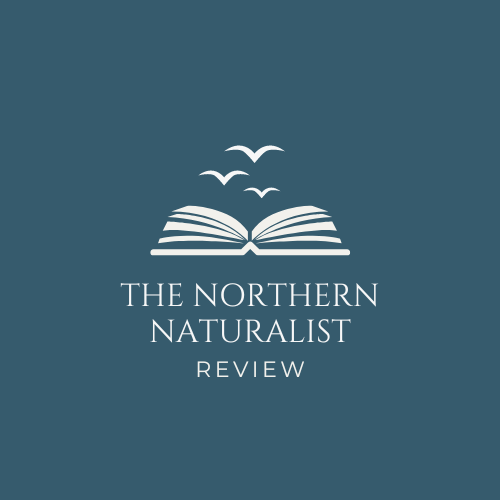


I always associate them with the Fundy coast of New Brunswick, which is where I first encountered them, in my early 20s. Charming birbs.
I really love sparrows and think they are sorely underrated. Delighted to see three of my top five favorite sparrows highlighted!